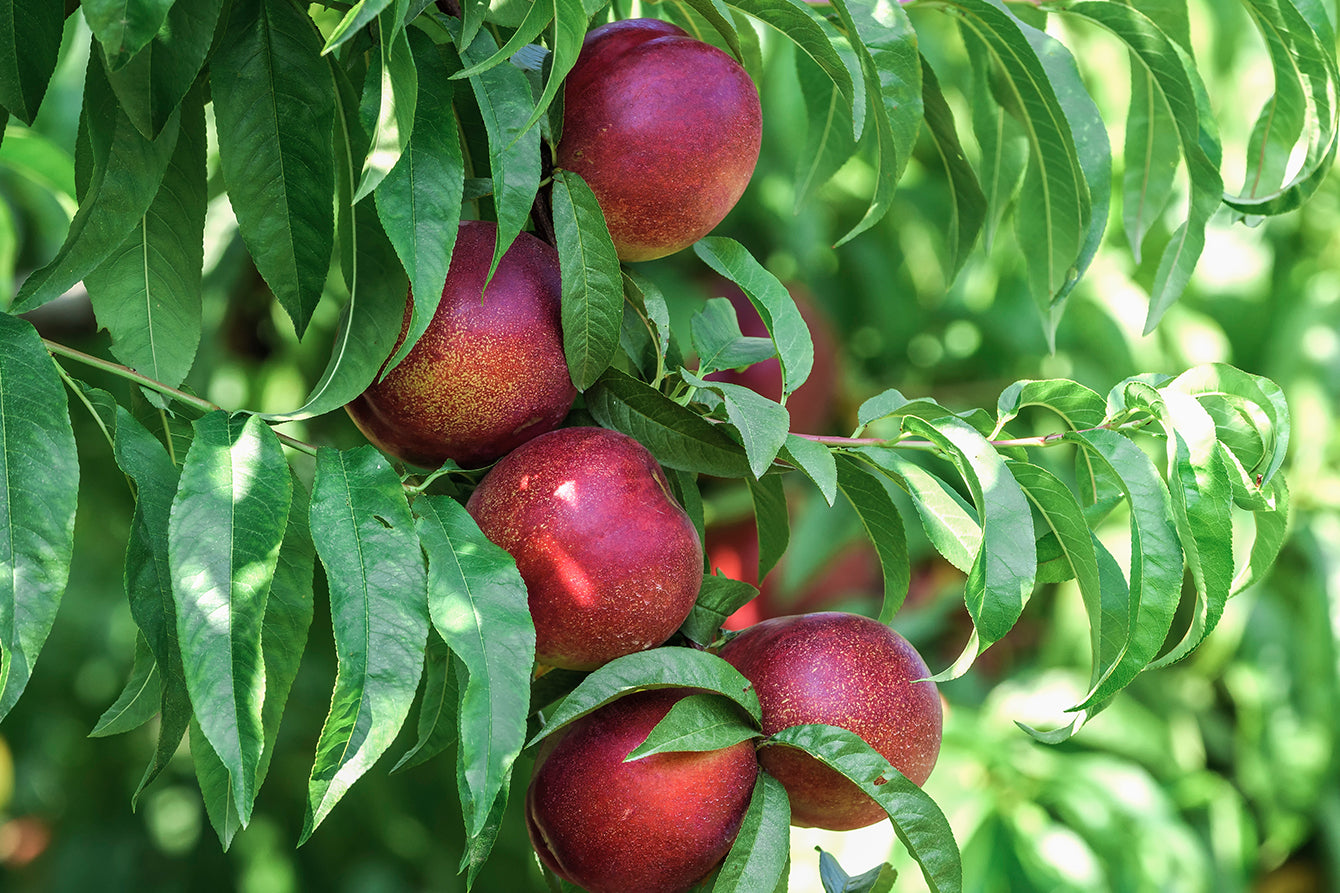Nectarines are one of the sweetest fruits of summer, offering a perfect balance of tangy and sweet flavors that make them a favorite in desserts, snacks, and even savory dishes. Whether you're a fruit lover or a gardener looking to grow your own nectarines, here's everything you need to know about this delicious stone fruit.

What Are Nectarines?
At first glance, nectarines look very similar to peaches. The main difference between the two? Nectarines have smooth, fuzz-free skin, while peaches are known for their characteristic fuzzy exterior. But aside from the skin, nectarines and peaches are actually quite similar. They both belong to the Prunus persica species, and their flesh, flavor, and growing conditions are almost identical.
The juicy flesh of a nectarine can be white, yellow, or even red, depending on the variety. They have a deliciously fragrant aroma and a sweet yet slightly tangy taste. Whether you eat them fresh, bake them into a cobbler, or add them to salads, nectarines are a versatile fruit that’s loved by many.
Growing Nectarines
Nectarines are relatively easy to grow, and they thrive in USDA hardiness zones 5 to 9, making them suitable for a wide range of climates. However, they do require a warm, sunny location to produce the best fruit. Here’s what you need to know to grow your own nectarines:
1. Location
Choose a sunny spot with well-draining soil. Nectarine trees need plenty of sunlight—at least 8 hours a day—to produce a good crop. Make sure the soil is rich in organic matter and slightly acidic, with a pH of 6.0 to 7.0.
2. Planting
Nectarine trees are usually planted in late winter or early spring, after the last frost. Space your trees about 12-15 feet apart to give them room to grow. If you live in an area with cold winters, make sure to plant your nectarine in a sheltered area to protect it from harsh winds and frosts.
3. Watering and Fertilizing
Nectarines need regular watering, especially during the hot summer months when the fruit is ripening. However, be sure not to overwater, as this can lead to root rot. Use a balanced fertilizer in the spring to encourage strong growth and healthy fruit production.
4. Pruning
Pruning your nectarine tree regularly will help keep it healthy and productive. Remove dead or damaged wood and thin out crowded branches to improve air circulation and light penetration. This also helps prevent diseases and pests from taking hold.
5. Pest and Disease Control
Like many fruit trees, nectarines can be susceptible to pests such as aphids, caterpillars, and fruit flies. Regular inspection and the use of organic pest control methods can help keep your tree healthy. They can also be prone to diseases like brown rot, so proper spacing and pruning are essential to avoid moisture buildup.
Nectarine Varieties
There are several varieties of nectarines to choose from, depending on your climate and preferences. Here are a few popular ones:
-
Sunraycer: A sweet and tangy variety with a vibrant yellow flesh, perfect for fresh eating and canning.
-
Sunbest: Known for its firm texture and excellent flavor, Sunbest is a favorite for both eating fresh and using in desserts.
-
Sunglo: A glowing, orange-yellow nectarine variety that delivers a wonderful balance of sweetness and acidity, ideal for snacking.
-
Mericrest: A late-season variety with a mild sweetness and smooth, freestone flesh, Mericrest is perfect for extending your nectarine harvest.
Harvesting Nectarines
 Nectarines are typically ready to harvest in mid-to-late summer, depending on the variety. The fruit will be slightly soft to the touch and have a full, fragrant aroma when it's ripe. To pick nectarines, gently twist the fruit off the tree to avoid damaging the branches.
Nectarines are typically ready to harvest in mid-to-late summer, depending on the variety. The fruit will be slightly soft to the touch and have a full, fragrant aroma when it's ripe. To pick nectarines, gently twist the fruit off the tree to avoid damaging the branches.
Health Benefits of Nectarines
Aside from being incredibly delicious, nectarines are also packed with nutrients. They are an excellent source of vitamin C, which helps support your immune system and skin health. They also contain fiber, antioxidants, and potassium, all of which contribute to a healthy diet.
Conclusion
Nectarines are not only a treat for the taste buds but also a rewarding tree to grow in your own backyard. With the right care, you can enjoy fresh, homegrown nectarines all summer long. Whether you’re eating them straight from the tree, baking them into a delicious pie, or adding them to a salad, nectarines are sure to be a hit in your garden and your kitchen.


